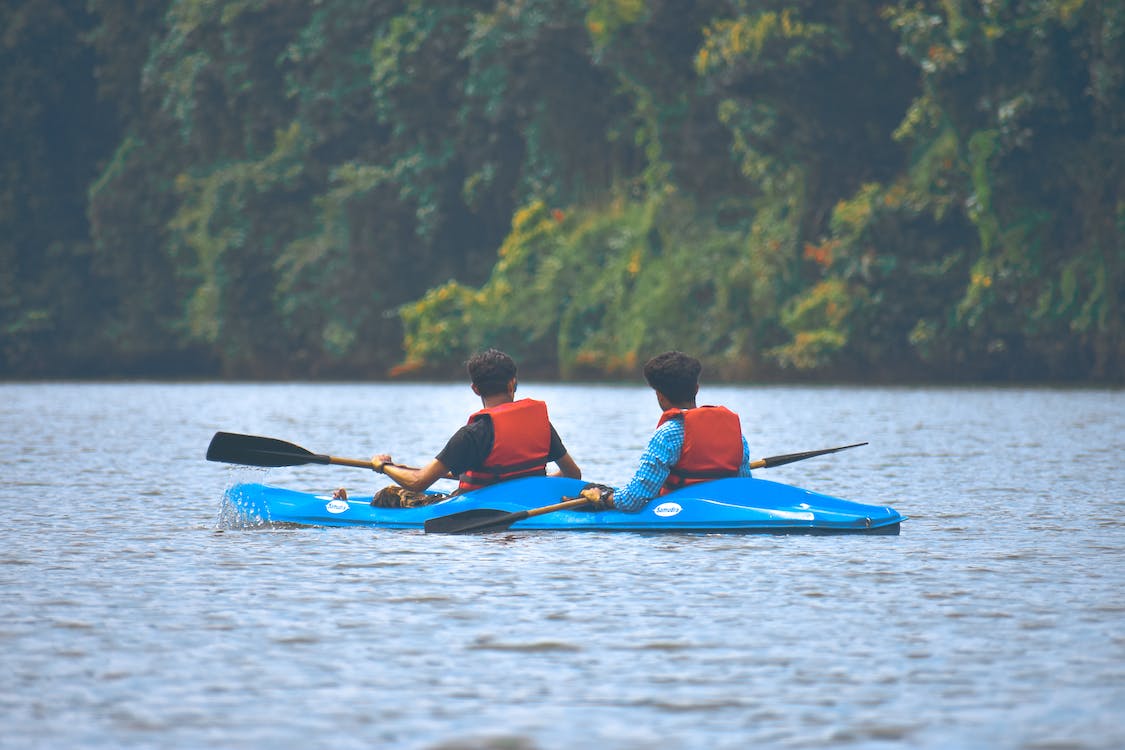If you’re reading this short guide, then it’s certain that you’re ready to have some outdoor adventure. On one side, kayaking is a fun water activity that lets you connect with nature while on the other hand; it’s a full body workout that lets you exercise while relaxing and experiencing the challenging upstream and downstream experience.
Now, the roots of kayaking span back to approximately 5000 years back where they were used by the Inuit tribe for fishing, hunting and recreational purposes in the Arctic North American region. During this time, kayaks were either made of driftwood or animal skin stretched over whalebone frames to maintain stability.
From the 1950s through to the 1980s, kayaks underwent major improvements (thanks to European settlers) where they were made of plastic, fiberglass then polyurethane.
So, if you’re looking to learn about all the aspects of kayaking, this guide will offer you a comprehensive step-by-step resource that will help you through.
Basic parts of a kayak
Before we proceed with our guide, let’s first get acquitted with some basic names of your kayak that will help you understand your vessel much better.
- Bow: This is the front section of the kayak
- Stern: The back of the kayak
- Cockpit: The opening of the kayak where the passenger sits
- Spray Skirt: This is a waterproof cover that prevents water from penetrating through the cockpit when kayaking
- Rudder: This is a blade at the back of the kayak that helps to maintain balance when kayaking. Using the foot pedals, you can easily push the rudder left or right to change direction.
- Hull: This is the body of the kayak
- Skegs: This is a fixed directional fin that drops down at the front of the kayak to help maintain balance and ensure that the kayak moves in a straight line
Different Types of Kayaks
Whether you’re looking to hire or buy your own kayak, understanding the different types of kayaks available is very paramount as it helps you to accomplish all your kayaking endeavors with enthusiasm. So, whether you’re looking to do touring, sea kayaking, whitewater kayaking or competitive kayaking, here are six different kayaks you need to be aware of.
- Sit on top kayaks: These types of kayaks are ideal for recreational purposes on warm calm climates. They’re easy to get on and off though they’re quite heavy than their sit-in counterparts.
- Sit-in kayaks: These recreational vessels are more stable and easy to control making them the best for long distance kayaking or kayaking on rough waters.
- Touring kayaks: Though pricey, these types of kayaks are stable and offer plenty of storage space to meet all your recreational needs.
- Folding and inflatable kayaks: These two recreational kayaks offer immense space-saving options as they can either be folded or inflated.
Choosing Your Best Kayak for Recreational Needs
As a beginner looking forward to enjoying your recreational kayaking, there are those factors you need to consider when making your purchase to avoid messing up in the process. In this section, we will point out some of these factors just to keep you informed when choosing a kayak.
- Padding locations: Where exactly are you planning to explore? Is it in the Colorado River, the San Juan Islands, Michigan’s Upper Peninsula, Lake Placid or the Peninsula? Whatever the case, different kayaks are designed to explore different locations within the US or even kayaking the Coppermine River in Canada.
- Durability: Are you intending to ride on white waters or under rough conditions? If the latter is the case, then consider looking for a kayak that can endure tough conditions.
- Weight: Are you looking for a kayak that can be transported effortlessly or one that is bulky?
- Storage space: If you’re looking for a kayak for short day trips, then one with less storage space will be ideal. On the other hand, if the kayak is intended for touring purposes, then it will need to have more storage space.
Padding Techniques
As a beginner in the world of kayaking, you need to have full control of your kayak to make your kayaking experience more fulfilled. Three major padding techniques are core when you’re learning how to kayak. Let’s briefly discuss each one of them to understand them better.
- Forward stroke: Just as its name suggests, the forward stroke is intended to pad the kayak in the forward direction. To achieve this, simply hold the paddle in a horizontal position to the cockpit rim. Next, move your body on one side then dip the paddle’s tip into the water in the other direction.
Rotate your entire upper body to get the paddle behind you. Here, ensure that the hand with the paddle goes past your hips. Remove the paddle from the water then move your body to the opposite direction to repeat the same procedure.
- Reverse stroke: With the backstroke, or reverse stroke for that matter, you hold the paddle next to your hips then push it with your lower hand. Push the paddle backward until it nears your feet where you’ll remove it from the water to perform another cycle.
- Sweep stroke: This is an improvised forward stroke that lets you turn the kayak either right or left. What happens is that you perform multiple forward strokes until the blade path forms a wider curve or arc on the side of the kayak.
Conclusion
Overall, the journey of learning how to kayak is not difficult provided you have the passion and understanding of the basics. Apart from the padding techniques, there are other factors you need to consider such as safety precautions to guarantee your safety when paddling.
Finally, recreational kayaking is not about perfection but rather it’s about progress. So, to become a great paddler, you need to stay safe and enjoy the fun of interacting with nature.

